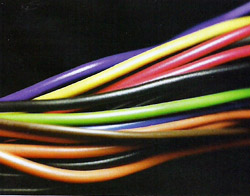Sooner or later, regardless of our chosen path in pro audio, the worst happens: someone asks us to install a system. Even if our preferred gig involves a Prevost and chain motors, folks tend to assume that “sound is sound,” and if you are a professional in one area, you are surely qualified in all others.
Even with no real hands-on install experience, most of us have no problem signing up for the occasional install gig. The gear looks the same, the pay is pretty good, it all wires up the same… what could go wrong?
As anyone who has ever heard a “studio guy” mix live can attest, each discipline in audio has its own unique set of tools. If you don’t have them, bad things happen fast.
The one thing that technical systems have in common is wire. The rules governing the use of flexible cords and cables for temporary audio production are largely limited to feeder cabling and loudspeaker wire, where the power levels are most likely to cause fire or physical harm. For the insanely curious, these details can be found in the National Electrical Code (NEC) Articles 640.42, 520.10, and 525.
Although cabling used in permanent installations is, for the most part, electrically identical to its well-traveled brethren, the rules governing its use are much more stringently defined in the NEC. Further, many municipalities employ local building codes that extend or exceed these standards.
One particularly strict jurisdiction is Las Vegas, where all cabling must be installed in metallic conduit. Following the 1980 fire in the MGM Grand (now Bally’s) which claimed the lives of 87 people and injured nearly 800 more, Clark County took a firm stance on the protection of all electrical systems installed within their buildings.
Though not all counties are as strict, it pays to become familiar with the local codes before attempting any installation. If you do not adhere to these codes, you risk having the building “red-tagged” or condemned while your cheerful former employer gets to re-wire the place. Good times.
For those of us fortunate enough to not live in Nevada, a term that we often come across when selecting cable is “plenum.” The NEC defines a plenum as “A compartment or chamber to which one or more air ducts are connected and that forms part of the air distribution system.”
To nutshell this, a plenum is an air return space, like a ceiling, used to collect return air without ducting to each return air grille. If you pop a ceiling tile and see ducts extending to or from each grille in a room, odds are, it is not a plenum space. More typically, because ducts are expensive, the mechanical engineer uses ceilings, stages and shafts as a plenum return.
If you run any wire within this space without conduit, you should be using wire that is plenum rated. This begs the question… why?
The wire we use for audio signals is classified by its intended use and its installed location. “When you take a look at any wire, you will notice a series of markings that indicate its type and classification (see Figure 1).
The factors that govern this classification include intended use/signal type, installation location (like in a plenum, riser, under carpet…), fire resistance, smoke toxicity and the manner in which the cable construction burns.
Further, a cable is evaluated for its performance as it ages and for how it performs with splits in its insulation and jacketing.
All of this has absolutely nothing to do with audio or electricity for that matter, but it has everything to do with fire; the cables listed in Figure 1 are in descending order of combustibility.
















